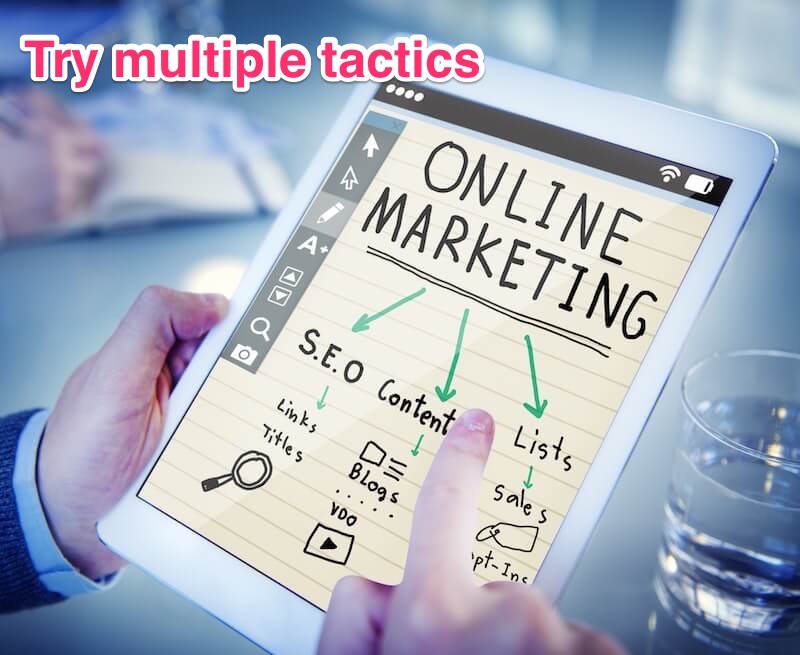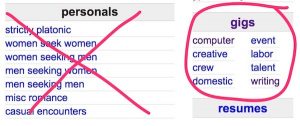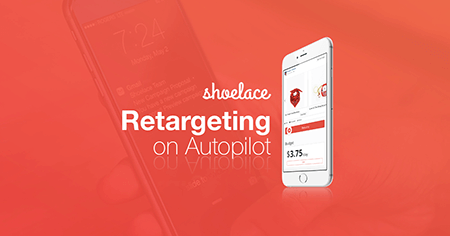If you’re like me you probably wait too long to hire and grow your team.
I tend to hire much faster now than earlier in my career because I realized this simple mantra – It’s all about the ROI.
If you’re a startup or running lean it doesn’t matter, as long as your hire generates a positive ROI you should go for it.
Let’s talk about scaling your store!
Step 1) Strengthen the foundation
Step 2) What can be automated?
Step 3) How to hire
Step 4) Where to hire
Step 5) When to fire
Step 6) Analyze
Step 1) Strengthen The Foundation
Since you’re about to drive a bunch of new traffic to your site, it’s a good idea to make sure you have solid foundation to maximize your conversions.
Here’s a checklist of upgrades that will increase your conversion rate:
- Add more social proof (Reviews/testimonials, social media links, Instagram images from fans)
- Trust badges on your product page – things like “secure checkout”, “money back guarantee”, etc (google it for ideas)”
- Lifestyle images – people love seeing other people using your product
- Branding – craft a compelling story why your brand is awesome and people should buy from you. Include images and put some good energy into your Home and About pages
- Speed Boostr! This is our main service – we optimize your site to make it faster, which improves all key metrics – load speed, user experience, engagement, SEO rankings, bounce rate, traffic, revenue
Step 2) What can be automated?
People are great, but computers are pretty awesome too and they work 24/7. See what you can automate first.
These are my go-to automations for Shopify stores:
- Facebook retargeting with Shoelace
- Email list building with Sumo
- Abandoned cart recovery with Abandonment Protector Plus
- Affiliate marketing with Refersion
- Google retargeting with Perfect Audience
- Sharing your Instagram posts to other social networks with IFTTT
Facebook Retargeting with Shoelace
Shoelace is a Shopify app that handles retargeting on complete autopilot and generates a solid ROI (I usually see 3x – 5x return on ad spend).
The majority of people that visit your site come and don’t buy anything or sign up for your list or become fan. This is where retargeting shines! They visit your site and pick up your Facebook pixel, then next time they’re on Facebook they see your ad – a lifestyle type ad or dynamic product ad, even with a customer review attached if you want.
This works like magic to bring visitors back and turn them into customers, and then fans of your brand.
Shoelace creates ads (you just approve), gets smarter with time, and handles the details so you just kick back and watch your sales go up.
Email List Building with Sumo
Sumo has a suite of web tools, but is most well known for their dedication to email marketing.
They’re known experts with a lot of blog posts to help you level up your email marketing.
The thing I like most about their email app is the variety of popups, scrollbars, sneak ups, and styles for each. You can also A/B test popups to see what works best.
Privy is also a good Shopify app with an insane amount of reviews, an honorable mention worth checking out if you want to compare and try a couple.
Abandoned Cart Recovery with Abandonment Protector Plus
Abandonment Protector Plus automates your abandoned cart emails by sending timed templates to customers that started checkout but didn’t finish.
I like to send one after an hour, then another after 24 hours. People abandon carts for various reasons – maybe shipping is expensive, or maybe they’re bored on their phone and decide not buy right there, maybe they forgot they don’t have the right credit card on them… You can experiment with your messaging to see what converts and collect easy sales.
There are a bunch of apps for this, I just like this one because of their analytics, templating, and options.
Affiliate Marketing with Refersion
I love this app! Refersion is an easy to use affiliate marketing platform for Shopify stores.
You set your commission and terms, then just link to your sign up page and invite people to join your program.
If you need advice on commission levels, setting program terms, etc, just give us a shout. Refersion support is also super helpful and the software is easy to use so don’t overthink it too much just give it a shot.
The beauty of an affiliate program is that it brings you free traffic, adds social proof because people are talking about your brand, and improves your SEO by increasing the amount of backlinks to your site.
If you get an army of bloggers, youtubers, and instagrammers linking to you and talking about your brand, your sales and traffic will start jumping.
Google Retargeting with Perfect Audience
Perfect Audience works kind of like Shoelace, but requires a little more effort (Shoelace is like 100% autopilot).
I like Shoelace for Facebook and Perfect Audience for Google. PA is also helpful in helping you create ads and get your automated systems going, and now between the 2 apps you’re casting a wide net on visitors that bounced from your site.
Automating Social Media Posts with IFTTT
IFTTT aka If This Then That is a bunch of applets that help you automate tasks.
I like to use this social media hack:
- Post on Instagram daily and share to Facebook from Instagram
- Set up the IFTTT applet to automatically share your IG post to Twitter as an image
- Use this applet to add your IG posts to a specific Pinterest board, based on the hashtags you use in your post.
Step 3) How to Hire
Look for positive ROI. That’s the key. It doesn’t matter the cost as long as you get a positive return.
Use math and analytics to make educated decisions when possible.
If you’re loaded and have a budget for “branding”, that’s awesome keep it pumping. If you have a limited budget, calculate and track your results to find your best ROI campaigns.
Hiring Example #1: PPC
Say you pay someone/agency $1,000/month to manage your Adwords account, and you have a $1,000/month ad budget…
Example math on a growing store with 50% profit margin:
- $1000 marketer expense
- $1000 ad spend
- 50% profit margin
You’re spending $2,000 per month here. You need to generate $4,000 in monthly sales from Adwords to break even financially. You’re also gaining a lot of new customers, brand exposure, and traffic to your site. So if you can at least hit that break even point that’s a huge win.
If you don’t hit the break even, you’ll need to adjust strategy and figure out why. If you’re just slightly under don’t sweat it, those extra benefits will raise your long term value.
The job of the marketer is to find the campaigns that generate a positive ROI and spend more on those.
Over time you’ll uncover more positive ROI campaigns and can increase your ad spend accordingly to scale up.
AdWords is awesome, I think every store should be using it, at the very least to drive highly targeted traffic on your primary keywords. If you don’t catch them on the sale, you have a decent chance with retargeting and email capture to acquire them as a future customer.
Hiring Example #2: Inbound Marketing
When you get pitched to be featured on a site, or an email newsletter, of a shout out of some sort, it can be hard to tell if it’s worth it or not.
Here’s how you can do it with math and asking the right questions:
Stats Needed
- Average revenue per visitor (Revenue divided by visitors. You can find this in Google Analytics – filter by a longer time period, like the last year)
- Quality of traffic from the campaign proposal (is it general traffic or specific to your niche?)
- Estimated new traffic from the campaign. You can get this by asking them for traffic numbers from previous campaigns
The Math
Say a site wants to include you in their next email newsletter for $300. Here’s how to tell if it’s worth it:
- What are the average amount of clicks they get in a campaign like this? (if its email, subscribers and opens doesn’t matter as much… clicks are key)
- If your profit margin is 50%, then you need to drive $600 in sales to break even. If your average revenue per visitor is $1, you need the estimated (or average) amount of clicks from that campaign to be 600.
Variances
Different channels produce different revenue per visitor. For example, social media is usually on the low end, while emails and referrals are typically on the high end. To simplify you can take the average if you want… these are all experiments anyway and you’ll have to do a few to get solid data to predict the future.
In the example above, you have to factor whether you are the only site featured in the email/article, or if it’s split up. If it’s split, you’ll want to factor that in by dividing the number of unique sites divided by the average click through.
Note about branding
The more brand exposure you get the better, so the numbers are just a reference, not a hard rule. If you see a great audience to get your brand in front of, it won’t matter as much with the budget, especially if the campaign isn’t too expensive.
If you have retargeting and email capture set up on your site (see Step 2), then you also get an incremental gain in ROI on each new visitor, because a % of them will sign up to your list (and a % of those will purchase something in the future), and a % of them will be retargeted and convert into a customer.

Hiring Example #3: Content Marketing
If you came to this post from a search engine, you and I are in the meta zone right now – I wrote this in hopes to drive more search traffic. Organic traffic is the best right? (well it’s free)
Content marketing is a hard one to gauge because it can take months to see results. But check your analytics and see what blog posts are driving organic traffic… and see what are driving sales. If you’ve been blogging on your site for at least a few months, you should have some data to work with. If not, get started!
Once you see what type of posts are working, you can create more like that, maybe for different product lines or features… or maybe they’re not even about products, maybe they’re lifestyle type posts that people really enjoy that lead them into your store.
Blog post ideas for ecommerce sites:
- Write a post showing features or how to use your product(s)
- Introduce new product line
- Highlight something your brand is doing outside of just selling products (donation, community work, innovation)
- Highlight people in your community/audience doing cool stuff
- Find keywords you want to rank for, then craft a blog post directly for that keyword phrase (and use the phrase in your SEO title)… this is really fun when it works.
If you’re into writing go for it. As the brand owner, you should at least be an occasional contributor.
To the point of this article though, hiring will help you scale faster.
Here’s how you can hire writers and get contributors:
- Get your team involved, they should be able to portray your brand voice well.
- Offer and seek out guest posts. People love guest posting, and if they’re already in your niche it’s a win-win – you get a relatable article, they get additional exposure.
- You can hire on Upwork or a writing specific marketplace like BlogMutt to get professional writers.
- You can also just reach out directly to writers you’ve read and ask them about their rates and any ideas for your site.
You’ll probably have to experiment to see what kinds of posts can drive revenue for you, but an experienced blogger should be able to show some insight on a good strategy for your brand.
Meta Example – Why I Wrote This Post
Using this post as an example, I put a lot of work into crafting this article over a couple days, plus years of ecommerce experience and failed experiments… now I’m sharing here because our blog is all about Shopify Optimization and Marketing Tactics. It’s what we’re good at.
Now, I can statistically say that about 50% of people that visit this page will visit another page on this site, I also know that most of them won’t purchase our service, which is totally fine we’re trying to build a community as well… but I also know that a % of people that read this will look into our Speed Boostr service and decide to hire us to make their site faster and increase their sales/traffic.
I know our service makes websites lighter and faster, and we’ve proved this with satisfied customers and tangible results, so I’m confident that if I invest my time to share quality information and tips for Shopify store owners to level up their business, they might just hire us to optimize their site.
Creating content builds community, improves traffic and search rankings, and gives you a chance to help your target customers by sharing your expertise and providing value.
Hiring Example #4: Social Media

This can be a tough one because it’s difficult to see an exact ROI.
Start with 1 channel first – where is your audience hanging out? If it’s a product business, Instagram is an excellent choice.
Side note: post 80% lifestyle pics and 20% pics with your product in it, maybe even 90/10. People generally don’t want to be bombarded with only posts about your product.
You can have a presence everywhere (and even automate posting), but you really should have someone dedicated to a single channel first – posting daily, engaging with fans, finding collaboration opportunities.
Social media is hard to put a direct ROI on, but if you see engagement, you see people coming to your site from that channel, and people tell you they where they found you (ask whenever you have a chance, like whenever someone emails you)… if all those things are hitting from your social media channel, then don’t worry about the exact numbers, that engagement and social proof will spread throughout your whole business.
Bottom line you NEED to have a social media presence on at least 1 channel, so find your best channel and figure out how to make it work aka hire someone that knows how.
Step 4) Where to Hire
You can hire all over the place – on Upwork, Craigslist, or even from your brand ambassadors.
I used to get gigs from Craigslist all the time. Post in the Gigs section under computers or writing.
 Gigs are good!
Gigs are good!
Ambassadors can be a great pool to choose from for hiring for things like social media and affiliate marketing because they’re in your space and already know your brand.
You might not get the rockstar you’re looking for on the first hire, but that’s ok that’s part of the process, just learn from it and set clear guidelines and expectations and you’ll get your rockstar eventually.
Step 5) When to Fire… or shut down a campaign
Marketing is all about experimenting. You’ll likely have more losses than wins, but the wins stick and you can scale them. Keep at it and you’ll have a collection of wins and steady increasing traffic (hopefully on autopilot), and hopefully a few home runs in there.
Run experiments, hire people, and try stuff out. I usually give a campaign or person/agency 1-3 months, depending on the project, cost, and the potential upside.
PPC takes time to figure out and dial in the keywords, so that’s something I would try 2-3 months. You should have a positive ROI by then for sure. If not, pause it and re-evaluate the system or the person running it.
SEO takes much longer, sometimes 6 months to see definitive results, and finding good SEO’s can be pretty tough.
When to hire/fire on this I think depends on the reputation of the SEO, the results they’ve delivered in the past, and the amount of tangible work they’re doing (keyword analysis, on page SEO, new backlinks, etc).
For SEO, it’s good to know the basics so you can craft a top level strategy and gauge the quality of the work. The Beginner’s Guide to SEO by Moz is an excellent SEO overview to learn how and why SEO works.
If I have an SEO bringing in steady quality backlinks and referral traffic, plus showing signs of increased organic traffic and better rankings, I’m happy to keep paying for that even if the short term ROI isn’t yet positive, because I know SEO is a long game with a lot of front-loading.
Step 6) Analyze
Always be experimenting, and always be analyzing.
It’s worth spending a few minutes every day logging into Google Analytics and getting more familiar with it.
You’ll start to see trends and be able to spot opportunities and pitfalls to help you make informed decisions.
Keep a spread sheet or google sheet for your marketing campaigns. Make sure to include dates and changes, and track your key metrics for the campaign (cost, revenue, conversion rate, traffic, etc).
Summary
If you’re experimenting, tracking your results, and trying new marketing tactics, there is a 100% chance you will grow and get closer to cracking the code for eCommerce marketing in your niche.









Leave A Comment